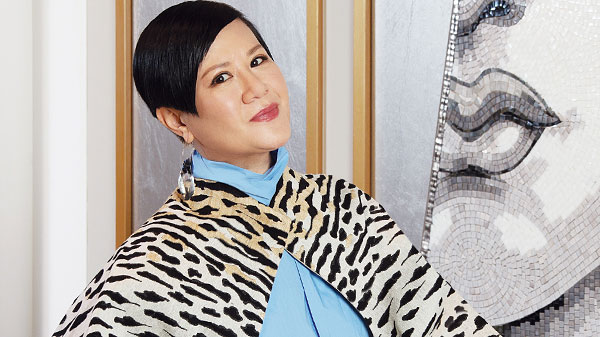
La Styla Bonita: Bonita Cheung, one of Hong Kong’s foremost fashion impresarios, now has designs on the future…
In 1998 you launched Tassels, your first fashion label. Four years later, the Bonita Cheung range made its debut, followed by Ni-Chi in 2009. Can you tell us a little about the genesis of each line?
After graduating, I didn’t jump straight into the fashion industry. Instead, I worked in the luxury jewellery sector, focussing on the marketing and advertising side. By 1998, though, I’d realised that fashion was where I really wanted to be and that I should really make the move before it was too late. Soon after, I opened my own workshop in Central and started creating bespoke items, evening and wedding pieces under the Tassels brand.
After a few years spent establishing Tassels and building up my clientele, I felt it was time to branch out under my own name. The result was the Bonita Cheung collection, which was picked up by Lane Crawford as part of its ready-made couture offering. Then, after I’d been working with Reina Chau [one of Hong Kong’s most stylish socialites and a leading patron of the arts] for several years, we both realised we shared a very similar approach to fashion and matching beliefs in the kind of styles we wanted to create. This led us to collaborate on our own ready-to-wear line – Ni-Chi. The company name was actually a combination of our daughters’ names – Nicole on my side and Chiara on hers.

When you are designing outfits, how do you visualise the women who will ultimately wear them?
I always imagine that my pieces appeal to women who are not easily influenced by the trends followed by others, while also being confident and fun to be around. Ultimately, my clothes are made for the kind of woman who isn’t afraid to try something new and who relishes every new adventure.
How would you describe your own approach to fashion design?
For me, it’s all about creating something that will withstand the test of time and be marked as a classic – not in the sense that it’s in any way old fashioned, but more that it has an enduring appeal. To my mind, you should be able to dust something off a few seasons after you bought it and find that you still want to wear it, largely because it’s both memorable and unique.

You’ve long been associated with the Hong Kong Fashion Designers’ Association…
I was initially approached to be one of the executive members. Later, when the chairman found I had a background in marketing, I was asked to focus more on that side of their activities. This led to me creating events that really showcased the work of the city’s fashion designers.
It was around that time that you set out to break records in association with the Danish Fashion Institute…
All that actually began with a conversation with Eva Kruse, the CEO of the Danish Fashion Institute (now the Global Fashion Agenda). Some years earlier, they held a very successful event – The World’s Greatest Catwalk – which had featured the longest runway ever seen at a fashion event. We decided to try and break that record, so we then had to find somewhere in Hong Kong that could accommodate the mammoth catwalk we had in mind. In the end, a 3.2km runway was created along the Victoria Harbour waterfront in Tsim Sha Tsui. Some 340 models took part and it took each of them 45 minutes to walk the full length of the catwalk, which saw us establish a new world record.

Last year, you were the Project Curator for Juxtaposed Fashion X Music, a major event in the city, which showcased over 150 different outfits from 75 local designers. What made you think the city’s fashion community needed to up its visibility?
Well, I think every city needs its own distinct character and fashion is a huge part of Hong Kong’s identity, not least because people here just love to style it up. While we are universally recognised as a shopper’s paradise, our local brands are largely under-exposed. On top of that, it’s far from easy for local designers to survive against all the international competition and the ever-rising rents. Having experienced all that for myself, I really wanted to help the up-and-coming generation of designers to get the kind of exposure and create the kind of noise necessary to overcome these very real challenges.

Where do you stand on the much debated diversity issues the fashion industry has had to contend with?
Well , we definitely need a greater commitment to diversity. To be brutally honest, 99 percent of models are still all drawn from the same demographic, which is a great shame. It’s really only when you have a more widely representative selection of models that you can truly showcase every design possibility. I want women – whether they are 155cm tall or 185cm, whether they weigh 100 pounds or 150 pounds – to know that they can look good in my designs. It also gives fashion an added element of reality – clothes aren’t meant to be costumes; they are meant to be worn by real people.
Thank you.
Interview by: Bailey Atkinson
Photos: Jack Law
Art Direction: San Wong
Venue: SICIS Hong Kong
Make-up: Margaret Wong
Wardrobe: Bonita Cheung
For the full article, please find the latest issue of Gafencu’s print magazine or the PDF version on the Gafencu app. Download the app from the Google Play Store or Apple App Store.







